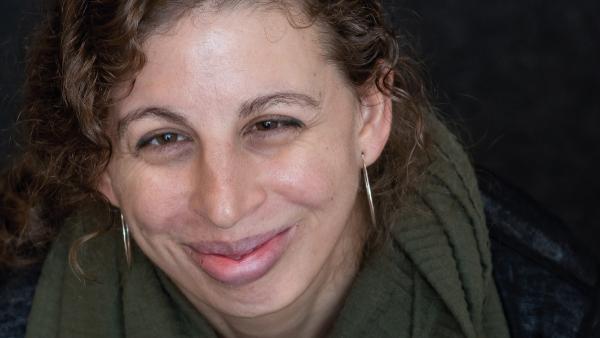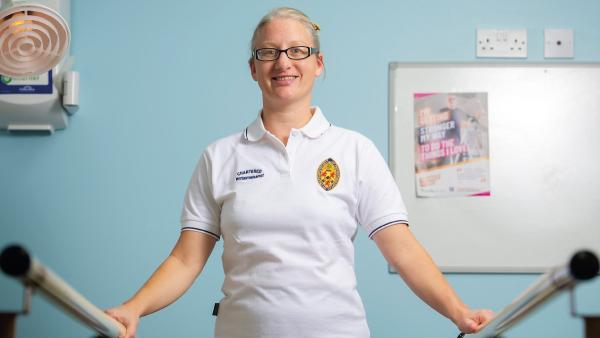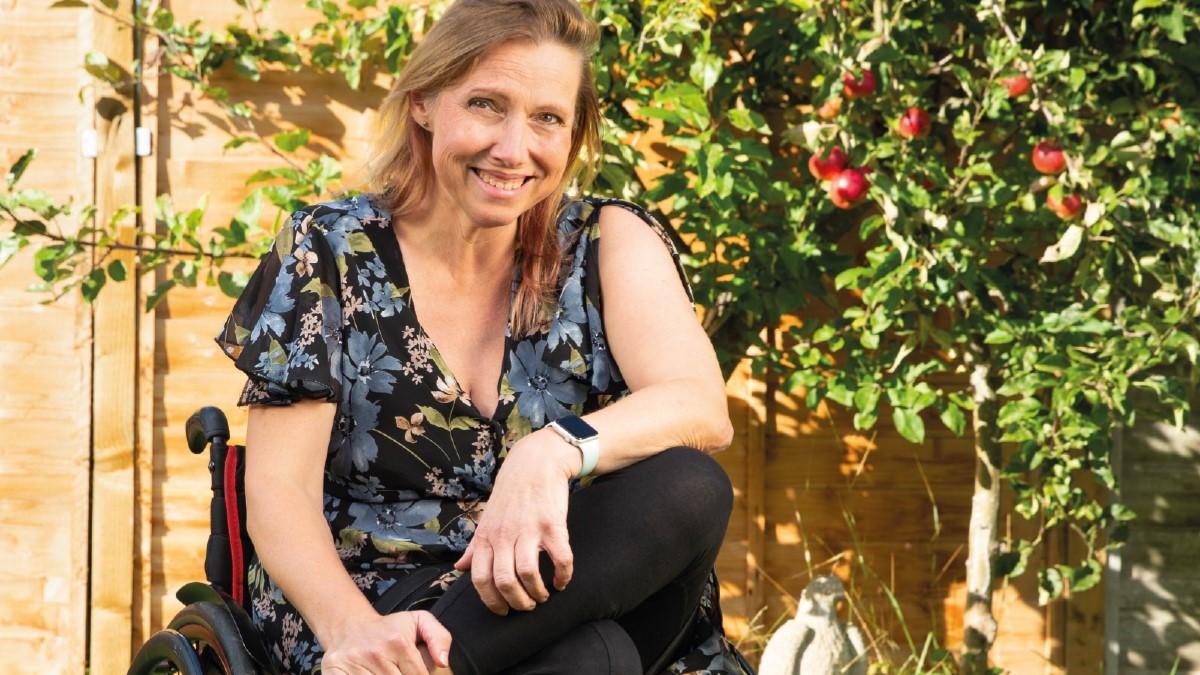Physiotherapy is working harder to become inclusive – yet discrimination is still a reality in healthcare settings. Tamsin Starr talks to four role models who are speaking out, and inspiring future generations with disabilities to bring their super strengths to the profession

Twelve years since the Equality Act came into force, people with disabilities are still experiencing discrimination, resistance to reasonable adjustments in the workplace and exclusion from certain careers.
‘If it wasn’t for the CSP, I wouldn’t be studying physiotherapy right now,’ says Iona Bateman, student officer for the CSP’s DisAbility network, who was told by an admissions tutor she would never be offered a job ‘with only one good hand’.
Assigning people with disabilities an unequal position that objectifies and ‘others’ them can all too easily add up to wider social exclusion. Even unintentional discrimination supports the creation of barriers for disabled people.
Physiotherapy is working hard to become an inclusive and welcoming profession that thrives on its diversity and difference. However, people with disabilities make up just six per cent of the UK physiotherapy workforce, lagging two per cent behind the allied health professions as a whole and well short of the 18 per cent that makes up the UK disabled population.
There are reports of physio students ‘hiding’ their disabilities for fear they’ll be kicked off their course. And more shockingly, of employers actively discriminating against workers by not implementing reasonable adjustments.
It is no surprise then that organisers of this year’s UK Disability History Month (16 November -16 December) have made inclusion a key theme. They want to step up the fight for equity, highlighting how the pandemic exposed the fragility of disabled people’s rights in the face of expediency.
Those within healthcare are championing the cause, too, channelling a keen sense of injustice into achieving positive change. We speak to four students and physiotherapists determined to inspire future physios with disabilities and increase awareness of the unique insights they bring to the profession.
‘Empowering others to join the profession is what drives me’
Iona Bateman, 42, was working as a photographer and journalist around the world until a boxing injury shifted her sights to physiotherapy. She developed chronic scapho-lunate dissociation in her right, dominant hand after receiving poor medical treatment abroad. ‘My wrist collapsed during a full-force punch and the doctor, instead of treating me, advised that, “women shouldn’t do boxing, go and have a baby instead,” and that was typical of the judgmental care I received,’ she admits.
After months of being dismissed by doctors, she finally had an MRI scan and was incorrectly diagnosed with terminal bone cancer and given three months to live by oncologists, before returning to the UK only to be correctly diagnosed with a benign wrist tumour.
Over a year had passed since the initial injury, which was left untreated, resulting in permanent disability.
Her hand is in constant pain, meaning she can’t lift heavy objects, write or grip with her hand. ‘It affects me a lot more at home than at university as I can use my forearm for manual handling and assistive computer software to write my notes.
‘I’ve thrived during my first year at university and achieved more than I could ever have imagined such as speaking at a CSP conference and obtaining elective placements in India and Sri Lanka, but can still be left in tears of frustration unable to do the simplest of tasks like putting on a bra or chopping vegetables.’
However, she was almost put off her chosen career when she asked for an early occupational health check at her first-choice university to ensure her disability wasn’t a barrier to study. Instead, she was told to take up a place elsewhere.
‘The admissions tutor contacted me, and I thought he was going to apologise and say they’d made a mistake,’ she says. ‘Instead, he told me that no one would employ me as a physiotherapist with only one good hand.’
Iona is now in the second year of her BSc at a different university, Southampton, and says she is grateful for her earlier experience. ‘I remember ringing the CSP that day feeling completely demoralised and hopeless. However, their support and guidance started me on the path to becoming its DisAbility network student officer and equity, diversity and belonging officer for the Student Reference Group.
‘Now thanks to my work with the CSP I’m future-proofing my career with a range of skills beyond the clinical. There are so many avenues you can go down in physiotherapy so disability isn’t a barrier to having a great career.’
She has much to show for her efforts already – having won the university’s backing and funding to develop a device gamifying exercise for use in stroke rehab, establishing a student-led sports massage enterprise and recently becoming president of her university’s Physiotherapy Society and vice-president of the Disability Society.
And from her newfound position of strength, she has a message for all physiotherapy admission tutors out there.
As therapists, we work with people with disabilities empowering them to be the best they can be, so all I ask is that they treat applicants with the same respect.
‘Every disability is different’
MJ Sharp’s journey to a career in physiotherapy coincided with her path to a diagnosis and coming to terms with a lifelong degenerative condition. She developed hip pain aged 22, which took 10 years to be definitively diagnosed as bilateral hip dysplasia.

She has undergone a number of surgeries and her post-op rehab sparked an interest in physio that grew into a profession.
Now in her mid-30s, the rotational NHS physiotherapist known as MJ is currently working on the ICU and surgical wards at Manchester University NHS Trust.
She works full-time in her role, a choice partly driven by the need to make the most of her ‘hip years’. ‘I don’t know how many I have left – or when it will get worse, so I’m keeping my options for the future open,’ she says.
She is on her feet a lot, and has to be careful when lifting patients to avoid pain in her hips.
‘They don’t like twisting too much, but then again all physios have to be aware of our positioning when we handle a patient.’
Despite taking care of her body, she has occasional flare-ups that leave her ‘limping around for a couple of days or needing to use a crutch,’ and occasionally uses anti-inflammatories to combat soreness. She is also more prone to fatigue.
‘Someone may be able to career around one end of hospital to the other, but I find I have to pace myself through the week, depending on what other activities I’m doing.’
Having an invisible disability can be an added strain. ‘I’ve had people say, “oh you’ve got a hip problem can you really be a physio with that?”. Others say, “you look fine there’s nothing wrong with you.” For one I have to prove I can do the job, the other that I have a disability.’
MJ admits she has been questioned over whether she really needs any adjustments for her job. Apart from being conversant with the Equality Act, she advises people to avoid assumptions when supporting students or colleagues with a disability.
Every disability is different, what suits one person may not suit another, so don’t assume what they need or can and can’t do. It’s always a good idea to ask the person what they find helpful.
‘And if you get feedback that you’ve said something wrong you can apologise, ask how the person would prefer you talk about it, learn from it and move on.’
And above all, don’t panic. ‘Some managers or supervisors see the word “disability” and worry, “oh no I have to do all this stuff”, when adjustments may be minor and are not always costly,’ MJ advises.
She believes that physiotherapists with disabilities are assets to healthcare in terms of careers and leadership. ‘Dealing with disability and mobility issues makes something happen in your brain – you learn to problem-solve because you don’t have a choice. You either problem-solve or you’re stuck.
‘So, I see my disability as affecting my career prospects positively. The NHS is a struggling institution and we need diversity of people and thought. We need that problem solving approach not “we’ve always done it that way”. We need diversity in race, gender, socioeconomic status – only when we have that can we find better solutions.’
She’s already put her knowledge to good use, producing a brochure on hip dysplasia. The ‘this is what I wish I’d known when diagnosed’ guide was developed by surveying others with the condition. She is considering specialising in research in the future.
‘Though I’m making connections across the spectrum of career options, so I’d like to see where they lead,’ she adds.
It is this kind of support that can be so critical for new physiotherapists – but doubly so for those with a disability. ‘When you’re training you are still learning. Discrimination does knock your confidence in your clinical skills and ability while support is building others up.
‘Being an ally and calling out awkwardness when you see it happening to a colleague with any kind of protected characteristic would be very welcome as you can often feel on your own trying to stick up for yourself.
‘Thankfully, I’ve had some really good experiences of people being accepting and I appreciate it so, so much.’
‘Breaking down the us and them’
‘We have a cardboard cut-out idea of what a physio looks like – they go to the gym of an evening, do park run at the weekend, eat

healthily – and they are able-bodied,’ says Singhamati Hannah, 42, a neuro physiotherapist at University Hospitals Birmingham NHS Trust.
Singhamati was diagnosed at the age of 19 with a rare neuromuscular condition, a degenerative genetic disease that causes muscle weakness. Though her symptoms were mild in her early 20s, it now affects her balance, walking and stamina.
Her employer has put in place reasonable adjustments, with Singhamati working part-time to manage her energy, and switching from a mix of community and hospital work to being based in a clinic. This enables her to thrive at work and continue to bring her skills and experience to the workplace.
‘Although I am well aware that others are not as lucky as I am, because it is down to managers’ willingness to support you to find a role that works for you within that service. This also makes changing roles, or going for promotions, difficult as you cannot be guaranteed that a future manager will be supportive.’
Since qualifying in 2001, she’s focused on working with people with long-term conditions. ‘I’ve always been passionate about helping people live well alongside a long-term illness, in part because of my own disability.
‘This gives me a unique perspective with my patients, as I have some understanding of what they’re going through and the impact it is having on them. Also, because I have often been one, I can find myself reminding colleagues to consider what it is like to be the patient, to try to see things from their perspective. To break down the barriers between us and them.’
Patients regularly express their gratitude to Singhamati for not only understanding their situation and how it’s affecting their lives but also representing them. ‘I celebrate people and their abilities. I just want people to be able to be themselves and not feel “less-than” because they’re not able-bodied.’
She admits that the subtlety of microaggressions on this front are hard to respond to. These commonplace comments or actions bely a prejudice towards those with disabilities, causing great distress and discomfort.
‘Once, I’d shared with a colleague about how I’d use an ankle splint when I’m at work. I was sat at the workstation doing my work when they called me over saying, ‘Can you show this patient your ankle splint?’ I didn’t know the patient and I hadn’t consented for that information to be shared with them.’
She is happy to gently correct, though repeatedly doing so must be tiring. ‘I encourage members to think about the language that we use as it internalises shaming. For instance, making jokes about “granny frames” stigmatises the use of mobility aids,’ she says.
Being an ally takes work, she admits. ‘Ableism is the water we swim in, and people don’t realise how strongly it shapes how they see the world. For someone to reflect on their views is really hard and subtle work.
‘I want to change the whole way we look at the world. I’d love for people not to experience disability as different, as a problem to be fixed.’
‘To get allies, you need to be one’
Unlike Singhamati, Iona and MJ, co-chair of the CSP DisAbility network Greet Janssens has a visible disability, being a wheelchair user. A stroke survivor with congenital hearing impairment, Greet works as a community children’s physiotherapist at the Hertfordshire Community NHS Trust.

She loves the long-term work of helping children and their families to manage neurological conditions and helping empower them to manage their own condition. ‘We’re guiding the family to knowing what they could be doing to improve their quality of life. I find families listen to me because they know that I understand what they are going through,’ she says.
She describes central post-stroke pain syndrome as her ‘worst enemy’ which, when combined with fatigue, can almost feel like a second stroke. She also experiences uncontrolled repetitive movements of the eyes and ataxic gait. She has reduced her hours since the stroke and admits the work takes a lot more energy from her.
The change from able-bodied practitioner to today has altered her outlook, too. She practised for 21 years able-bodied before her stroke three years ago. ‘I get how challenging a life can be for a young person with a disability, which is not necessarily what I would have understood before I had my stroke.’
Perhaps because her disability is on display, she shows less exasperation and more zero tolerance to discrimination, her ambition and drive to overcome what she calls her ‘minority complex’ undimmed by experience.
‘With microaggressions I’m assertive enough to say, “What you just said is not on”. Having nipped it in the bud it’s never escalated to a bigger thing. If people notice their managers doing this too, then it’s much easier to have an open-door policy where people feel they can raise issues.’
She is equally inspiring on the subject of allies. ‘In order to get allies, you need to be an ally,’ she argues while extolling the support of networks. ‘You need to make clear to people with other marginalised protected characteristics that you’ll be there for them, and they’ll be there for you.’
Greet acknowledges that burn-out is a risk for physiotherapists with disabilities, particularly if reasonable adjustments are not under constant review. But while she admits her escalating fatigue may see her moving into a non-patient facing role one day, she finds working with students particularly energising.
Role models matter to the next generation more than ever – and for Greet amplifying the voices and increasing visibility of physiotherapists with disabilities is a calling. ‘So, when students with disabilities ask me, “how is my career going to look?” I say they can be a stronger physio and have a lot of riches to bring to this profession. I help people see their super strengths.’
Every person with a disability that she can encourage and support into physiotherapy brings the profession closer to reflecting the make-up of society. ‘I’m completely besotted with my job, I really like making a difference for my patients. If I manage to pass that on to another therapist or undergraduate that’ll keep me going.’
Find Out More
Number of subscribers: 2
